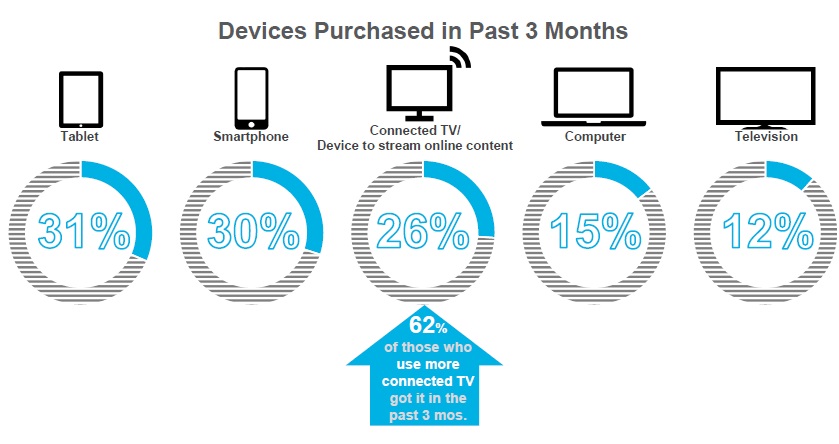The Changing TV Experience: Attitudes and Usage Across Multiple Screens by IAB came out April this year. The research was conducted between January 19-21, among 18 or older adults, and “wanted to benchmark device ownership and usage and to understand how device behaviors and perceptions are affecting or altering the TV viewing experience.” This article will incorporate some of the key findings in the research.

Source: IAB
Device Ownership and Usage
Today’s consumers own a variety of screens from which to watch video.
About three in ten US adults have recently purchased a tablet, smartphone or connected TV/device.
On average, US adults report spending nearly 5 hours using a computer each day, slightly more than they spend watching TV.
Smartphone, tablet and connected TV/device usage has increased considerably over the past year.

Source: IAB
Multitasking Behaviors: How does owning multiple screens affect TV viewing?
For the majority of the TV viewing audience, watching TV is no longer a standalone experience.
The smartphone is the dominant ‘second screen.’
Multiscreening is a daily habit.
Multiscreening is on the rise, especially among those with a smartphone or tablet.
Smartphone and tablet multiscreeners are more likely to pay attention to the TV; computer multiscreeners’ focus is half-and-half.
While watching TV, multiscreeners are more likely to extend their TV viewing to their smartphones; less so on other devices.
While top multiscreening activities of smartphone users are unrelated leisure, a sizable portion is related to what they’re watching on TV.
Full report available at http://www.iab.net/changingtv.